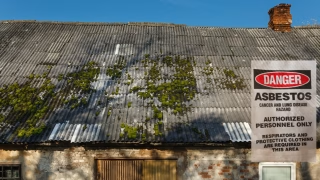
Creator: rawpixel.com / Carol M Highsmith
Rethinking Construction: Innovating Our Way Out of the Housing Crisis
Australia’s ongoing housing crisis isn’t just a matter of insufficient supply—it’s a complex puzzle that requires a multifaceted solution. The traditional debate often flattens the issue into simplistic terms: more funding, more buildings. However, with construction costs skyrocketing and property prices near record highs, it’s clear we need a strategic overhaul, not just more of the same. This is where innovation in the building sector becomes crucial.
The New $10 Billion Housing Australia Future Fund (HAFF)
The HAFF, introduced by the Albanese government, promises to invest $500 million annually to construct social housing. While this initiative is a step forward, critics argue it could be inflationary unless paired with significant productivity enhancements in the building industry. The sector currently lacks the capacity to meet the demand for the additional 30,000 homes planned within the fund’s first five years. To genuinely address the housing shortage, we must leverage innovative construction methods and rethink our approach from the ground up.
Beyond Supply: A Holistic View on Housing
Focusing solely on the supply aspect oversimplifies the housing provision process, which involves development, design, construction, operation, and even the end of life of buildings. Each phase offers opportunities for innovation:
- Development: We should explore alternative business and ownership models such as housing-as-a-service, co-housing, build-to-rent, rent-to-buy, and shared equity schemes. These models not only diversify the market but also make housing more accessible to different segments of the population.
- Design: Efficiency in housing design is paramount. With households shrinking, the focus should be on making homes smaller, more flexible, and adaptable to various needs—like home offices or extended family living.
- Construction: Prefabricated and modular homes built in factories could revolutionise how quickly and affordably we can construct quality housing. Embracing these methods can also broaden workforce participation and promote job diversity.
- Operation: Enhancing the performance and sustainability of buildings will reduce long-term costs for occupants, avoiding “utility time-bombs” of high running expenses.
- End of Life: Decarbonisation and sustainable resource use must be prioritised to allow for the adaptive reuse of materials and buildings, extending their useful life and reducing waste.
Investing in the Future
The key to resolving the housing crisis lies not just in building more houses but building smarter. By integrating innovative practices across all phases of housing development, we can enhance productivity and extend the capacity of the industry. It is time for the government to consider dedicating at least 1% of housing funds to support innovation programs. Such investment is not merely a cost but a step towards sustainable, long-term solutions to our housing challenges.
In conclusion, while the debate on housing affordability continues to rage, it is essential that we do not lose sight of the innovative solutions that could lead us out of this crisis. By embracing and investing in new ideas, we can build a future where everyone has access to affordable, efficient, and sustainable housing.

🚀 Ready to Elevate Your Building Career?
If you’ve been inspired by the possibilities in the building and construction industry, it’s time to take action. The Certificate IV in Building and Construction offers the expertise and knowledge you need to turn your aspirations into reality. Whether you’re aiming to become a skilled builder, an efficient project manager, or a visionary leader in the residential building sector, this course is your stepping stone.
Join a community of professionals who have transformed their careers with this nationally recognised qualification. Don’t just build structures, build a future you can be proud of. Discover more about how you can start your journey with the Certificate IV in Building and Construction.






